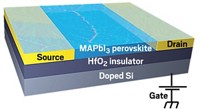Advertisement
Grab your lab coat. Let's get started
Welcome!
Welcome!
Create an account below to get 6 C&EN articles per month, receive newsletters and more - all free.
It seems this is your first time logging in online. Please enter the following information to continue.
As an ACS member you automatically get access to this site. All we need is few more details to create your reading experience.
Not you? Sign in with a different account.
Not you? Sign in with a different account.
ERROR 1
ERROR 1
ERROR 2
ERROR 2
ERROR 2
ERROR 2
ERROR 2
Password and Confirm password must match.
If you have an ACS member number, please enter it here so we can link this account to your membership. (optional)
ERROR 2
ACS values your privacy. By submitting your information, you are gaining access to C&EN and subscribing to our weekly newsletter. We use the information you provide to make your reading experience better, and we will never sell your data to third party members.
Materials
Building Low-Cost Solar Cells On Plastic
Materials Science: With low-temperature methods, researchers can fabricate thin-film solar cells on plastic, possibly leading to flexible devices
by Alexander Hellemans
November 19, 2013
Thin-film solar cells called solid-state dye-sensitized solar cells could offer a low-cost alternative to conventional crystalline silicon cells. For the first time, researchers have fabricated one of these thin-film devices on plastic, opening the door for flexible solar cells amenable to large-scale fabrication techniques (J. Phys. Chem. C 2013, DOI: 10.1021/jp408663d).
Dye-sensitized solar cells (DSSCs) work mainly through titanium dioxide materials coated with light-absorbing dye molecules. When excited by light, the dye molecules eject electrons that the TiO2 then transports to an electrode in the cell. An electrolyte solution transfers electrons back to the dye molecules to complete the process.
In recent years, researchers have replaced the liquid electrolyte with solid inorganic materials, because the liquids often leak and cause corrosion, limiting the cells’ lifetimes. Unfortunately, to make these solid-state DSSCs, researchers must use a sintering process that reaches temperatures of 450 ºC. Plastic can’t withstand those temperatures, so researchers must fabricate the devices on stiff glass, which isn’t compatible with large-scale manufacturing methods like roll-to-roll processing.
To make solid-state DSSCs on flexible plastic substrates, chemist Bin Liu of the National University of Singapore and her colleagues found methods to make two key TiO2 films in the devices.They first used atomic layer deposition to create a dense TiO2 layer and then electrophoretic deposition to make a mesoporous one. The dense TiO2 film ensures electrons move toward the correct electrode by blocking electron flow in the other direction. The mesoporous TiO2 film holds a flexible conducting polymer and the dye molecules. “These two techniques make it possible to work at less than 150 ºC, and you obtain a relatively good-quality film,” Liu says.
The cells have a 1.9% efficiency rate for sunlight-to-electricity conversion. Other solid-state DSSCs have rates around 15%. But Liu points out that this work was a proof-of-principle showing that they could use low-temperature techniques to make the cells. Her team is now working on finding new materials that can improve efficiency by increasing the conductance of the cells’ films.




Join the conversation
Contact the reporter
Submit a Letter to the Editor for publication
Engage with us on Twitter